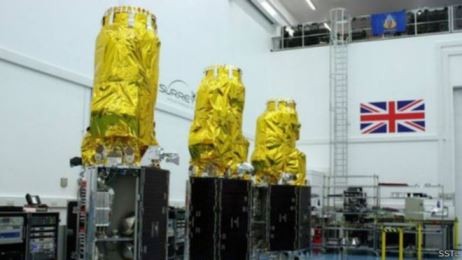Three satellites with one-meter resolution optical Earth observation capabilities were successfully launched on July 11, early Saturday, Twenty First Century Aerospace Technology Co. Ltd. (21AT), the operator of the satellites, announced.
The satellites, which form the DMC3/TripleSat Constellation, were launched from a site in India as part of the Sino-British cooperation project.
Surrey Satellite Technology Ltd. (SSTL), the world's leading small satellite company and part of the Airbus Group, developed the satellites. The U.K.-based SSTL designed and manufactured the satellite's high resolution imager, which can provide one-meter ground sampling distance (GSD) in panchromatic mode, and four-meter GSD in multispectral mode.
The imaging capacity of the three satellites was provided by 21AT, a commercial Earth observation satellite operator in Beijing, and dubbed the Constellation "Beijing-2."
The Chinese company was tasked with managing the satellites' operation, which will also include observation, control, data reception, data production, and other related services.
Wang Zhiyong, 21AT deputy-general manager, said that the Beijing-2 was approved as a state program and became part of the national civilian-use space infrastructure.
The Chinese government has been encouraging investments from private enterprises to gain support for the launch and operation of remote sensing satellites, as well as for ground application systems for satellite navigation.
Industry observers recognized the Beijing-2 as an important milestone in private sector involvement in the commercialization and international cooperation of the industry.
China and the U.K. signed the cooperative pact for the DMC3/TripleSat Constellation in London in 2011.
The satellites have a lifespan of seven years and can be used in monitoring applications, such as urban planning and intelligent management, at a very high resolution.
According to SSTL, the three satellites will be 120 degrees apart within three months after launch, around the same orbit using their on board propulsion systems, and the constellation will be able to target anywhere on Earth once a day.
Wang Zhiyong said that 21AT will start its data services in three months,once the three satellites are fully operational. He added that the constellation will offer a huge amount of data for use in farming resources survey, environmental monitoring, land resources management and urban management.



























